This post may contain affiliate links. Please read our disclosure policy.
Learn how to cook pandan sticky rice at home with just 6 simple ingredients. This Vietnamese classic gets its vibrant green color and delicate floral aroma from fresh pandan leaves and coconut milk. Garnish it with grated coconut and roasted peanuts for a sweet and nutty snack!
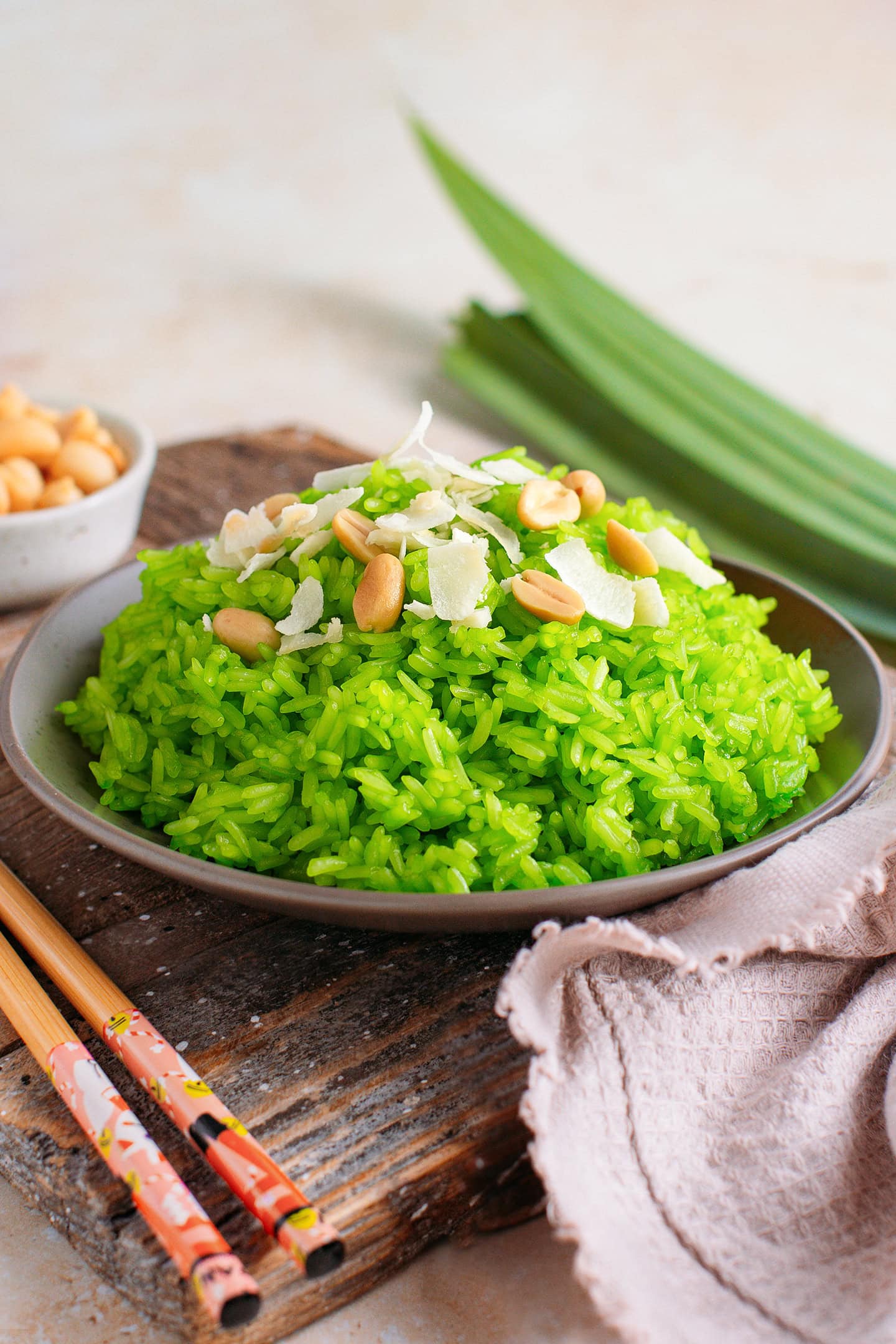
Today, I’ll show you how to make pandan sticky, a Vietnamese sweet snack that my wife Vân showed me how to prepare. It’s a recipe she grew up with and that she learned from her mom.
So what’s pandan rice? As its name suggests, it’s sticky rice infused with pandan leaves. The rice is first soaked with pandan juice (plus a few drops of extract for extra color and flavor), and then steamed with sweet and salty coconut milk until it turns tender and chewy!
Pandan rice is actually part of the traditional “five-color sticky rice”, a dish where each shade represents one of the five elements – metal, wood, water, fire, and earth. The green from pandan stands for wood.
🌱 Why Give It a Try
Because it has a unique taste!
I know, I know. Green rice doesn’t exactly scream “delicious” at first glance. But trust me, its flavor is what makes it special. It’s quite tricky to describe, but to me, it tastes like a blend of jasmine tea, fresh grass, and a hint of vanilla.
Top it with roasted peanuts and grated coconut, and you’ve got a simple yet addictive sweet snack (or even breakfast!). In Vietnam, people enjoy it at any time of the day!
It’s simple to prepare.
Although it’s a bit more time-consuming than your plain white rice, it’s not much more complicated either. Simply blend pandan leaves with water and then soak the rice in the pandan juice overnight. The next day, drain it and steam it with a drizzle of coconut milk. And that’s it, done!
🥥 What You’ll Need
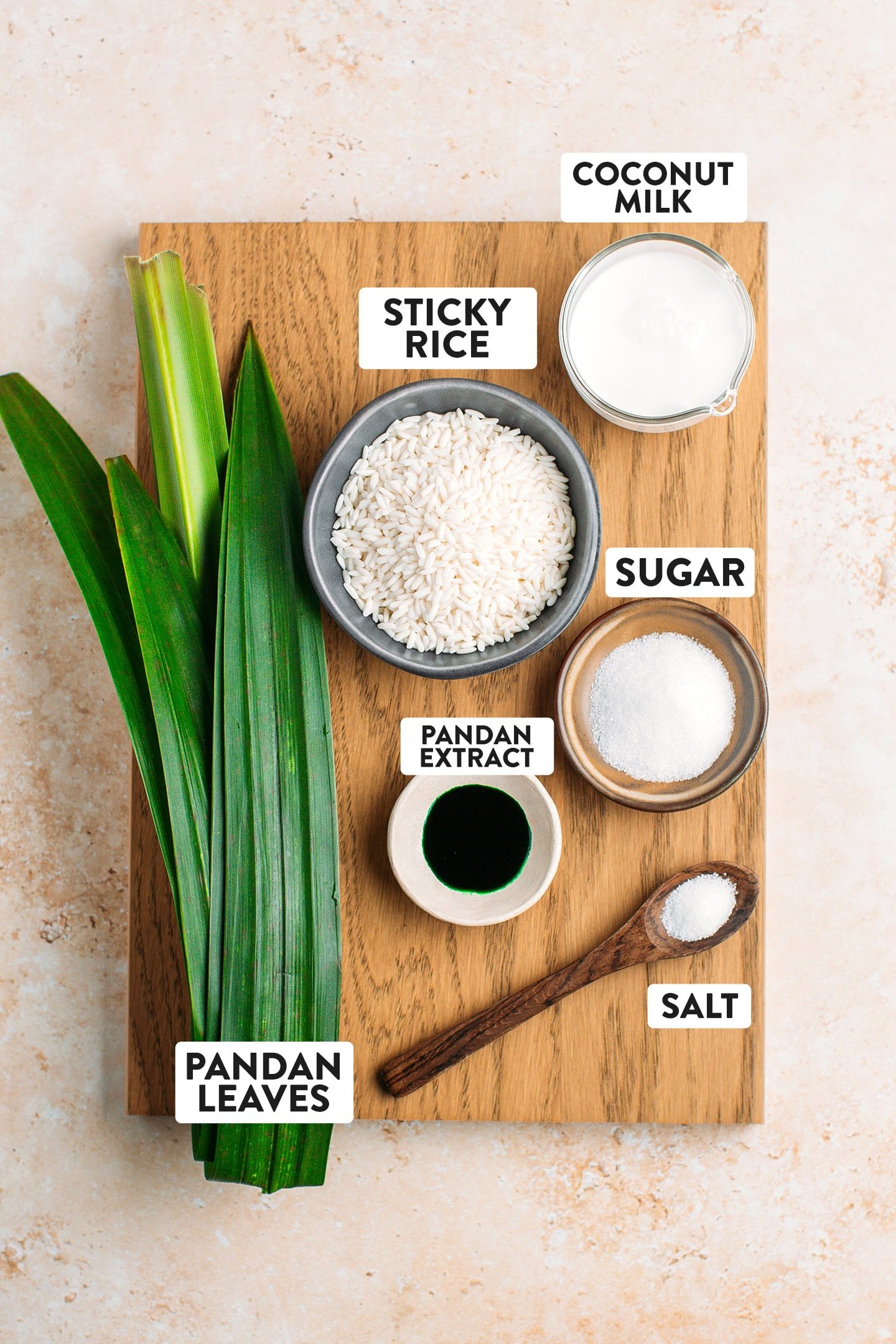
Sticky rice
Sticky rice, also known as sweet rice or glutinous rice, makes the base of this recipe. And no, it’s not just regular rice that has been overcooked! Sticky rice is actually a different variety of rice that has a naturally chewy texture and clumps together after cooking.
Where to buy: You can buy sticky rice online or get it at your local Asian supermarket.
Looking for more sticky rice recipes? Check out my purple sticky rice and savory Vietnamese sticky rice.
Pandan leaves
To infuse the rice with floral notes, you will need fresh pandan leaves. Those long and dark green leaves, also known as pandanus, are commonly used in Asia to flavor both sweet and savory dishes. When you smell them for the first time, you will probably notice a grassy scent, but once cooked, they release a sweeter flavor that is nutty and tastes like a mix of jasmine and vanilla.
Where to buy: Most well-stocked Asian grocery stores have fresh pandan leaves in the refrigerated section.
How many leaves to use? After testing with different amounts, I settled on 4 leaves for 2/3 cup of rice. The leaves I used here weigh approximately 7g each. So, in total, you will need roughly 21g (a bit less than an ounce) of leaves.
Love pandan? Try my banh da lon (steamed pandan cakes) or pandan coconut bread!
Pandan extract
Pandan leaves alone, while they deliver a lot of flavor, do not bring enough color to the rice. That’s why you will need to use a few drops of pandan extract. Not only does it give the rice a nicer green color, but it also adds depth and nuttier notes.
Note: If you want the light green color shown in the photos, you will have to use Vietnamese pandan extract, often sold under the brand 3K. Indonesian pandan extract (Koepoe koepoe) works too, but it tends to yield a darker, more artificial green color. Flavorwise, I didn’t notice any difference between the two.
Coconut milk
Full-fat coconut milk adds richness and pairs beautifully with the pandan flavor.
Salt and sugar
To season the rice. And because pandan sticky rice is typically enjoyed as a sweet snack, it’s lightly sweetened.
📔 Success Tips
Do not skip soaking the rice!
It’s essential to soak the sticky rice for a minimum of 6 hours. This allows the grains to absorb water, resulting in a better texture after steaming. For information, I have tried skipping soaking, and it resulted in rice that was not evenly cooked – it was tender on the outside but almost hard on the inside.
Use pandan extract.
Seriously, if you want your rice to have a vibrant green color, then pandan extract is critical. I’ve tried omitting it, and while the rice still tasted good, it only had a light yellow color.
Steamer vs. Pressure Cooker
There are different ways to cook sticky rice, from steaming to pressure cooking. Here, I am using the steaming method to cook the rice. It’s the traditional way and my preferred option, as it allows you to test the doneness of the rice more easily than with a pressure cooker.
🥣 How to Cook It
1. Make the pandan juice
- Rinse the rice. Before starting, you will need to rinse the sticky rice. To do so, add it to a medium-sized bowl and cover with cold water. Stir the rice a few times and drain it. Repeat this step 2-3 times or until the water is almost clear. Keep the drained rice in the bowl and set it aside.
- Blend the pandan leaves. Add the water and chopped pandan leaves to a high-speed blender. Blend on high speed for 10-15 seconds. Let it sit for about 5 minutes to allow the water to absorb the flavor of the pandan leaves.
- Strain the juice. Next, strain the pandan juice using a fine-sieve mesh and transfer it to the bowl containing the rice. Discard the pandan pulp. Add the salt and pandan extract and stir to combine.
2. Soak the rice
- Soak overnight. Cover the bowl of rice with plastic wrap and let it soak overnight or for at least 6 hours. After that, your rice will have taken a beautiful green color!
3. Steam it
- Arrange a steamer. Bring a pot filled with about 3 cups of water to a boil. Then, wet a thin cotton cheesecloth and place it inside a bamboo steamer basket.
- Drain the rice. Drain the soaked sticky rice and transfer it to the steamer basket. Close the basket with its lid.

Vân’s Steaming Tips
Spread the rice. Once you have added the rice to the bamboo basket, use a spoon to spread it into a flat, even layer. This will ensure it cooks properly.
Be careful with any cheesecloth that might overhang. If your cheesecloth is larger than the width of your bamboo basket (like ours), fold the extra fabric over the lid to prevent it from hanging over the edges during steaming. Otherwise, it could get too close to the heat and catch fire!
Boost the pandan flavor. Knot two pandan leaves and drop them into the pot of boiling water under your steamer. As the water boils, the leaves will release extra fragrance and infuse the rice.
- Steam the rice for 10 minutes. Place the bamboo basket steamer over the pot of boiling water and steam the rice for 10 minutes.
- Prepare the coconut milk. In the meantime, add the coconut milk, sugar, and salt to a small bowl. Stir until the sugar is completely dissolved.
- Drizzle the coconut milk. Open the lid of the steamer and slowly drizzle the sweetened coconut milk over the sticky rice. Use a spoon or a pair of chopsticks to stir the rice to combine.
- Steam for another 10 minutes. Close the lid and steam for another 10 to 15 minutes or until the rice is tender but still slightly chewy. Your rice is now ready!
🥜 How to Serve It
Ultimately, you want to garnish the sticky rice with a lot of freshly grated coconut (or coconut flakes if you don’t have fresh coconut), a handful of roasted peanuts, and an optional sweet and salty sesame and peanut topping.
For the sesame/peanut topping, crush 2 tablespoons of roasted peanuts and combine them with 1 tablespoon of toasted sesame seeds, 1.5 tablespoons of sugar, and 1/4 teaspoon salt. You can then sprinkle the mix over the rice and enjoy!
Although not traditional, it also tastes great served as a savory dish with air fryer lemongrass tofu, vegan roast pork, or seasoned and sautéed vegan chicken.
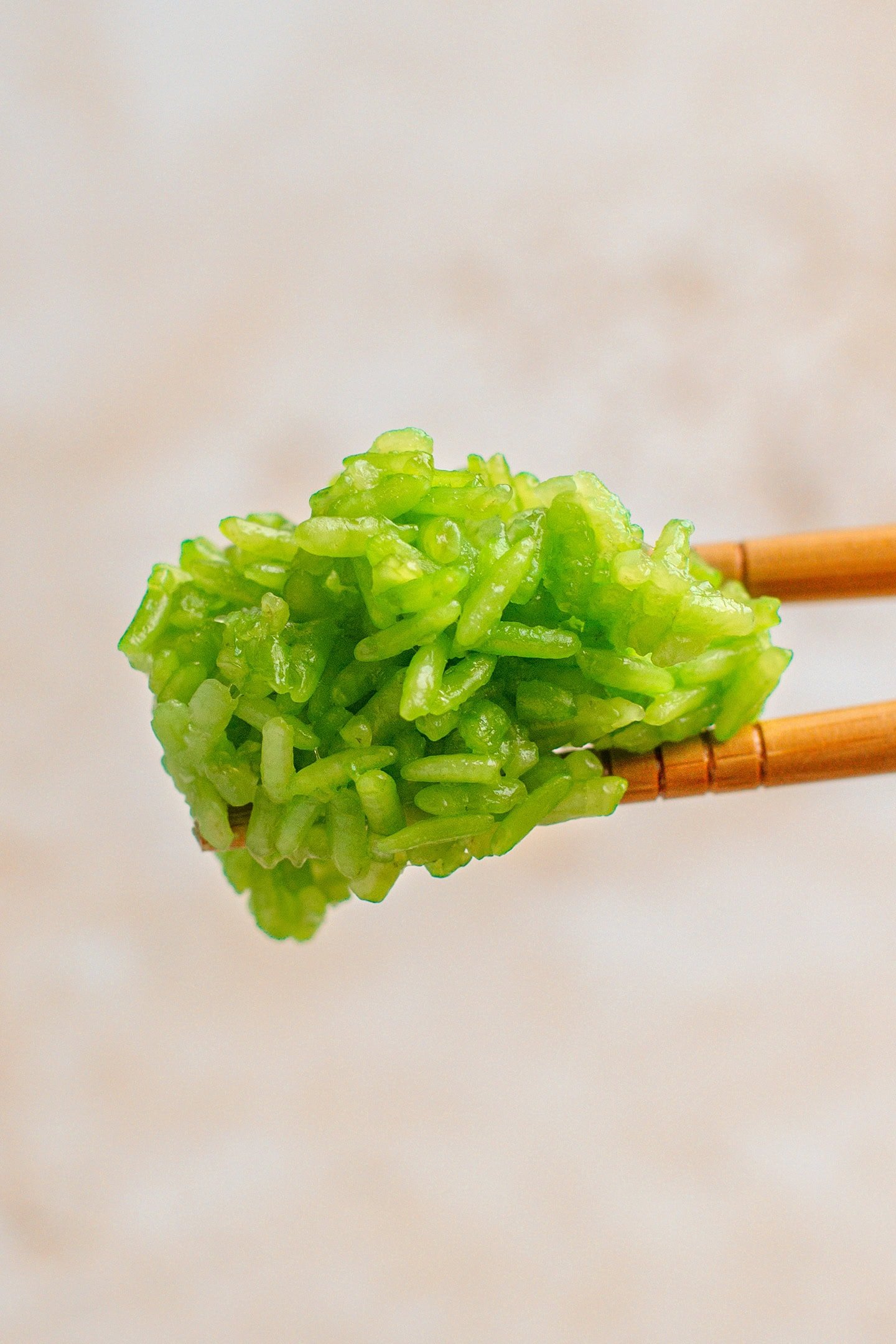
❄️ Storing and Reheating
While it’s best to cook the rice right before serving, you can store and reheat any leftovers. Keep them in the fridge for up to 2 days. To reheat, place the cooked sticky rice in a steamer and steam it for about 5 minutes to warm it up.
💬 FAQ
Yes, if your kitchen is too hot, you can soak the rice in the refrigerator. I suggest leaving it at room temperature for 1-2 hours before steaming.
This recipe was passed to me by my Vietnamese wife, so yes, you can consider this recipe authentic!
Unfortunately no. Sticky rice will turn into a mash and will lose its chewy texture if cooked in boiling water like regular rice.
And now you know how to cook pandan sticky rice from home! If you’re new to this dish, let me know in the comments if you liked its unique flavor. And for those who have tried it in Vietnam before, I hope each bite will transport you back there!
⭐️ Did you like this recipe? Let us know in the comments below, and tag us on Facebook, Instagram, or Pinterest!
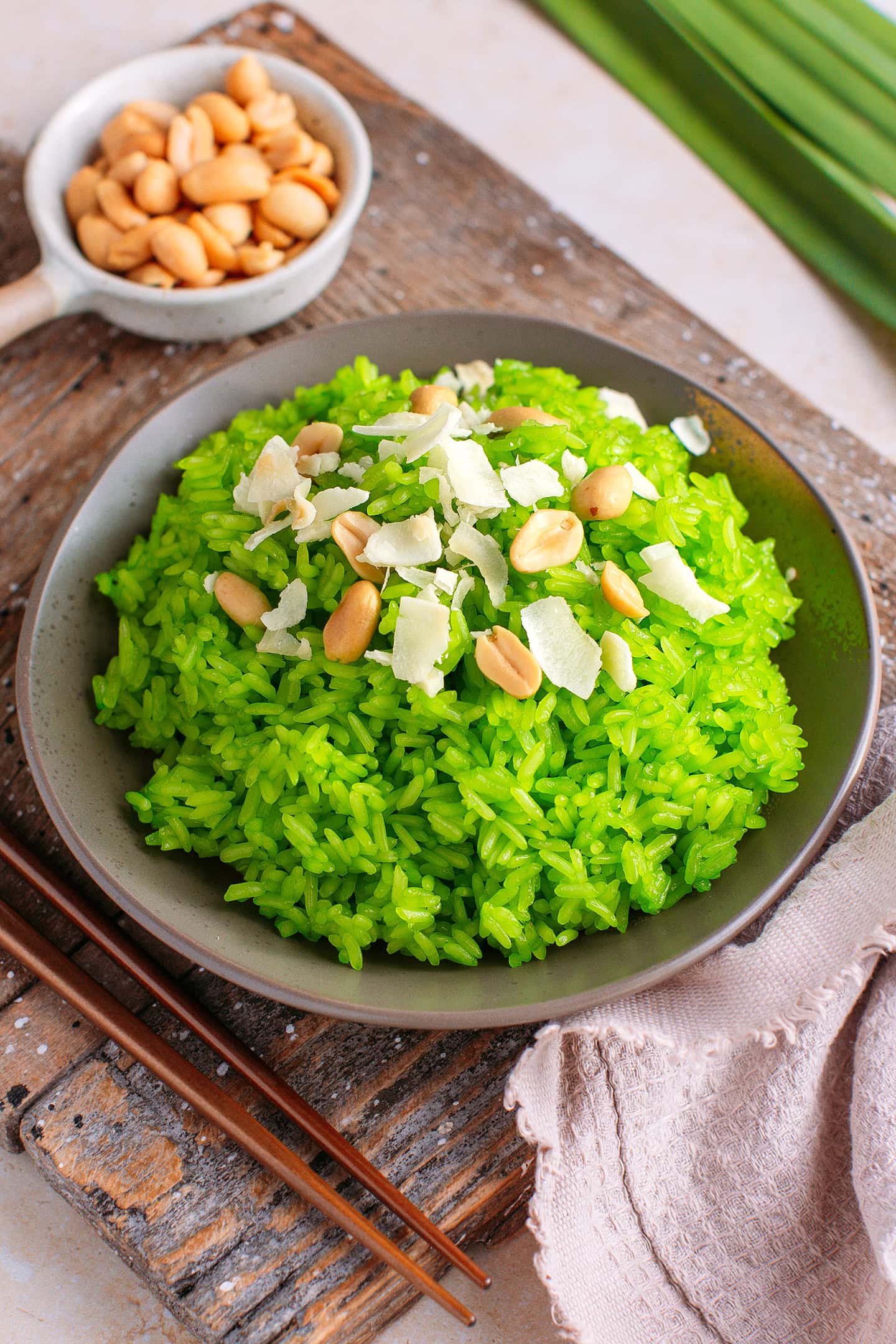

Want to Save This Recipe?
Enter your email below & we’ll send it straight to your inbox! Plus, you will receive new recipes every week!
I’d like to receive more tips & recipes from Full of Plants.
This site is protected by reCAPTCHA and the Google Privacy Policy and Terms of Service apply.
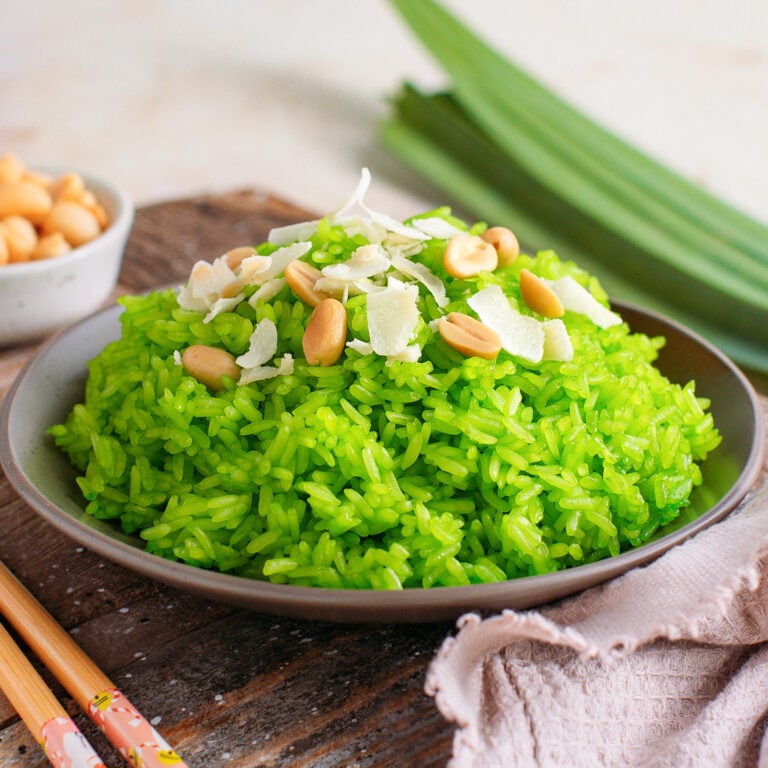
Pandan Sticky Rice (Xôi Lá Dứa)
Ingredients
- 2/3 cup (150 g) uncooked sticky rice
- 1 cup (240 ml) water
- 4 fresh pandan leaves chopped into 2.5-inch (6 cm) pieces
- 1/4 tsp salt
- 1/4 tsp pandan extract
Sweetened coconut milk
- 3 tbsp (45 ml) coconut milk
- 2 tsp (8 g) sugar
- 1/8 tsp salt
Instructions
- Rinse the rice. Before starting, you will need to rinse the sticky rice. To do so, add it to a medium-sized bowl and cover with cold water. Stir the rice a few times and drain it. Repeat this step 2-3 times or until the water is almost clear. Keep the drained rice in the bowl and set it aside.
- Blend the pandan leaves. Add the water and chopped pandan leaves to a high-speed blender. Blend on high speed for 10-15 seconds. Let it sit for about 5 minutes to allow the water to absorb the flavor of the pandan leaves.
- Strain the juice. Next, strain the pandan juice using a fine-sieve mesh and transfer it to the bowl containing the rice. Discard the pandan pulp. Add the salt and pandan extract and stir to combine.
- Soak overnight. Cover the bowl of rice with plastic wrap and let it soak overnight or for at least 6 hours. After that, your rice will have taken a beautiful green color!
- Arrange a steamer. Bring a pot filled with about 3 cups of water to a boil. Then, wet a thin cotton cheesecloth and place it inside a bamboo steamer basket.
- Drain the rice. Drain the soaked sticky rice and transfer it to the steamer basket. Spread it into an even layer. Close the basket with its lid.
- Steam the rice for 10 minutes. Place the bamboo basket steamer over the pot of boiling water and steam the rice for 10 minutes.
- Prepare the coconut milk. In the meantime, add the coconut milk, sugar, and salt to a small bowl. Stir until the sugar is completely dissolved.
- Drizzle the coconut milk. After 10 minutes, open the lid of the steamer and slowly drizzle the sweetened coconut milk over the sticky rice. Use a spoon or a pair of chopsticks to stir the rice to combine.
- Steam for another 10 minutes. Close the lid and steam for another 10 to 15 minutes or until the rice is tender but still slightly chewy. Your rice is now ready!
- Serve. You can garnish the sticky rice with a lot of freshly grated coconut (or coconut flakes if you don't have fresh coconut), a handful of roasted peanuts, and an optional sweet and salty sesame and peanut topping.For the sesame/peanut topping: Crush 2 tablespoons of roasted peanuts and combine them with 1 tablespoon of toasted sesame seeds, 1.5 tablespoons of sugar, and 1/4 teaspoon salt. You can then sprinkle the mix over the rice and enjoy!
- While it's best to cook the rice right before serving, you can store and reheat any leftovers. Keep them in the fridge for up to 2 days. To reheat, place the cooked sticky rice in a steamer and steam it for about 5 minutes to warm it up.
Notes
Do not skip soaking the rice!
It’s essential to soak the sticky rice for a minimum of 6 hours. This allows the grains to absorb water, resulting in a better texture after steaming. For information, I have tried skipping soaking, and it resulted in rice that was not evenly cooked – it was tender on the outside but almost hard on the inside.Use pandan extract.
Seriously, if you want your rice to have a vibrant green color, then pandan extract is critical. I’ve tried omitting it, and while the rice still tasted good, it only had a light yellow color.Steamer vs. Pressure Cooker
There are different ways to cook sticky rice, from steaming to pressure cooking. Here, I am using the steaming method to cook the rice. It’s the traditional way and my preferred option, as it allows you to test the doneness of the rice more easily than with a pressure cooker.
About the Author
Thomas Pagot is the founder, photographer, and recipe developer behind Full of Plants. He created the blog in 2016 as a personal cookbook for vegan recipes. Through years of recipe development, Thomas has successfully grown Full of Plants into a trusted resource for plant-based recipes.


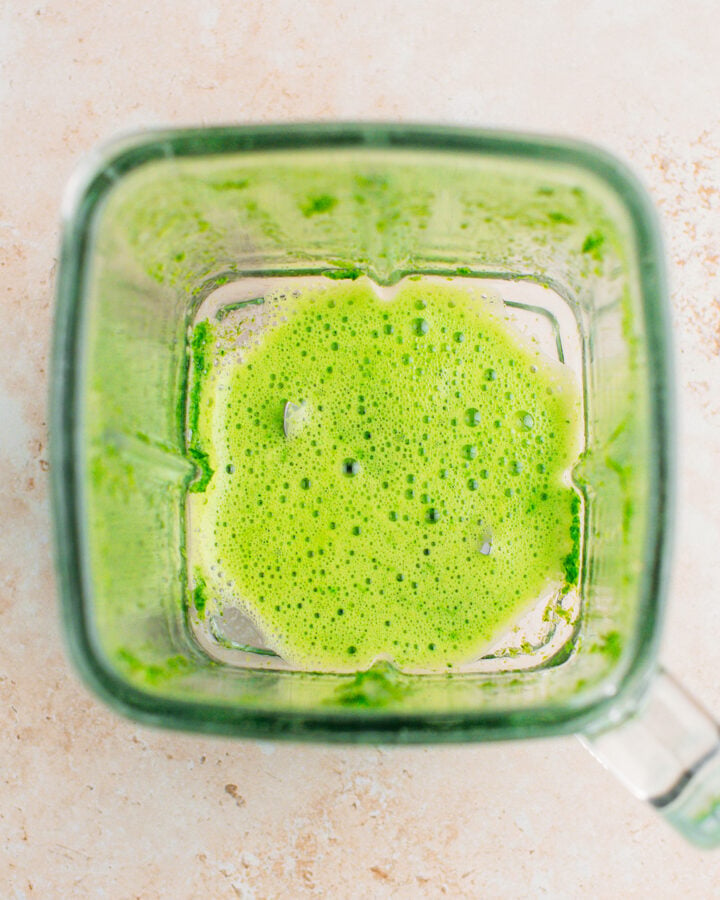
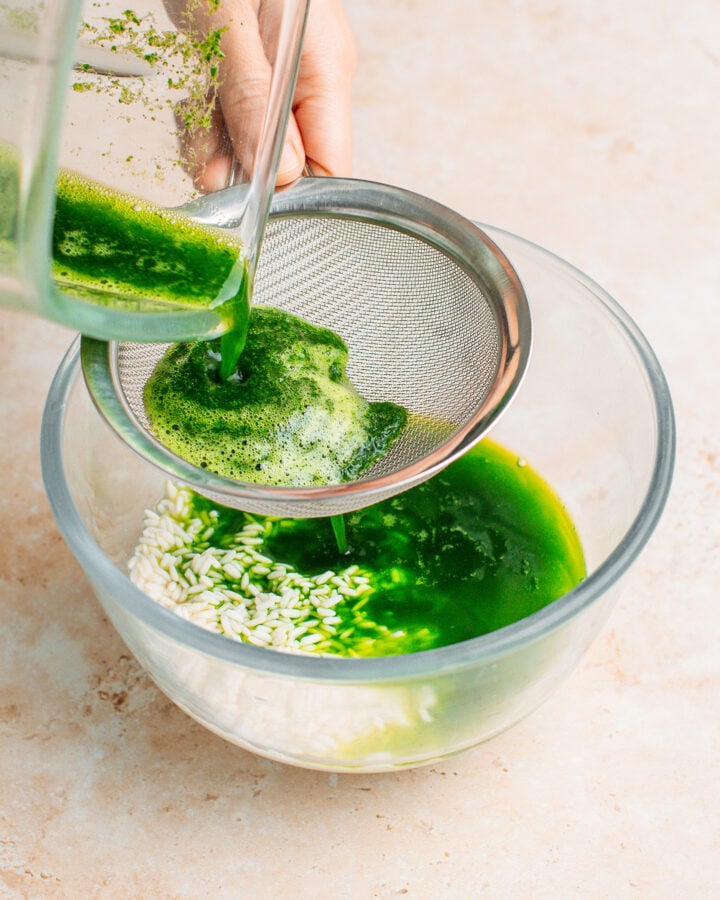
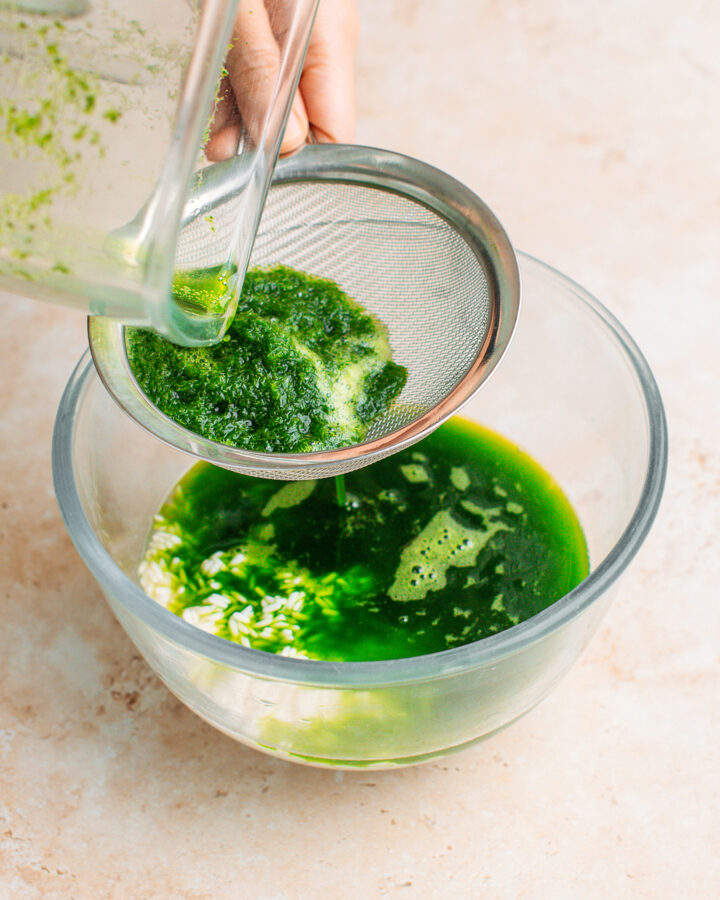
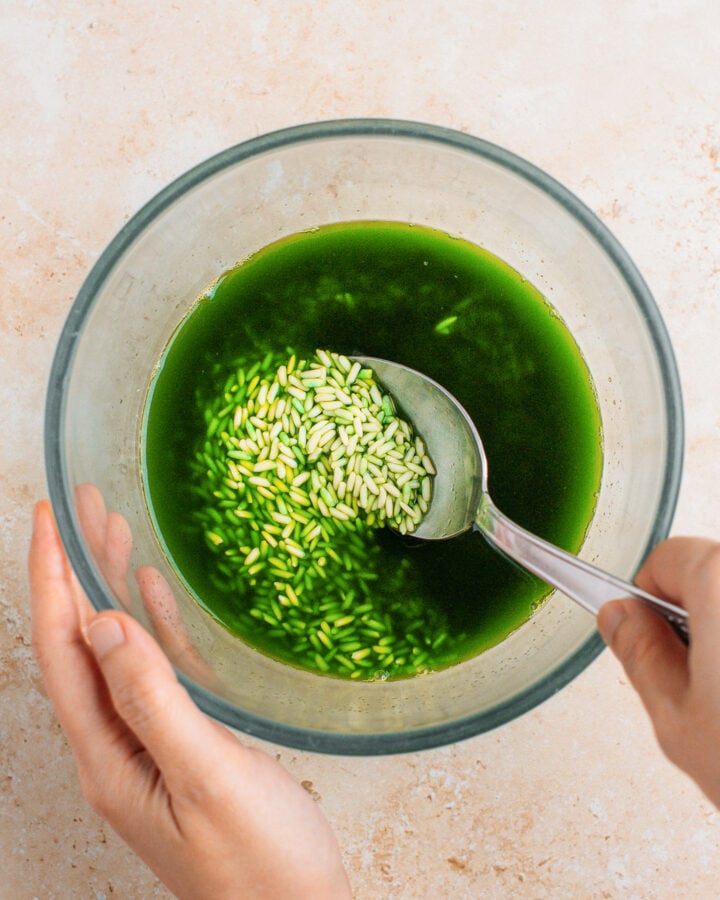
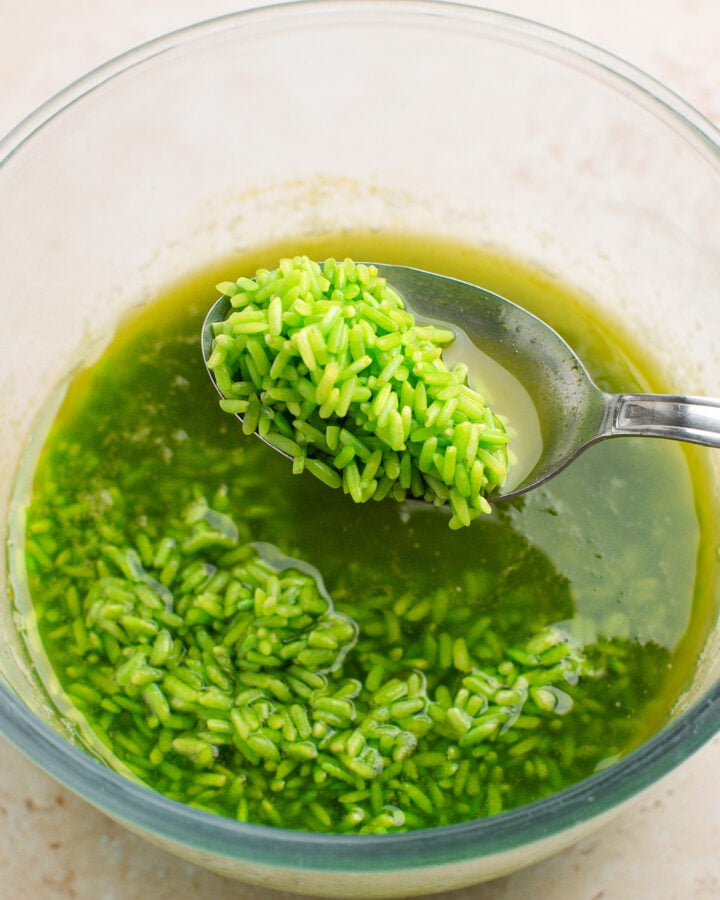
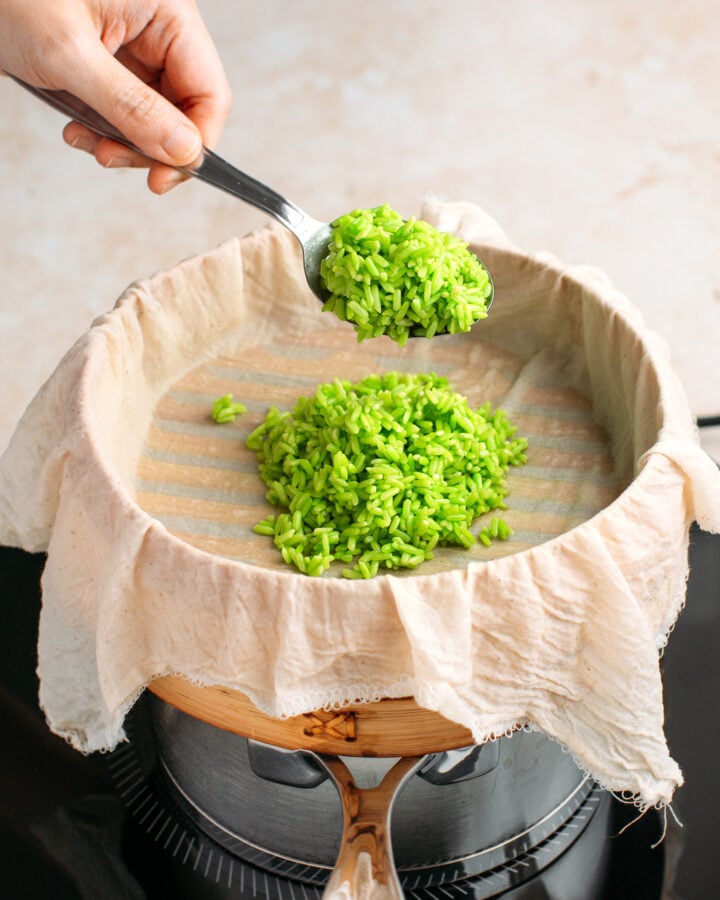
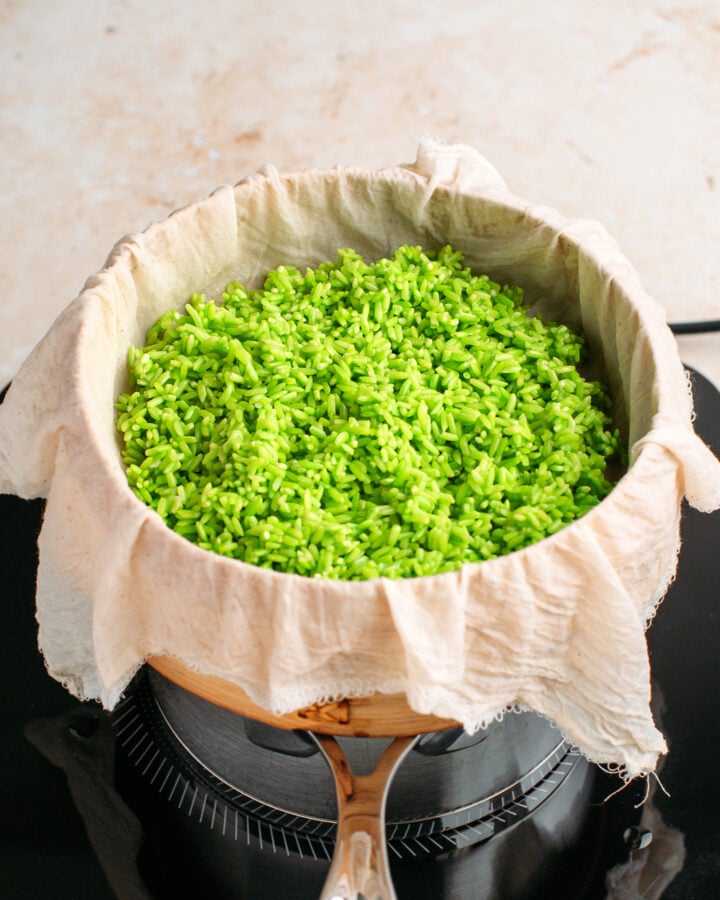
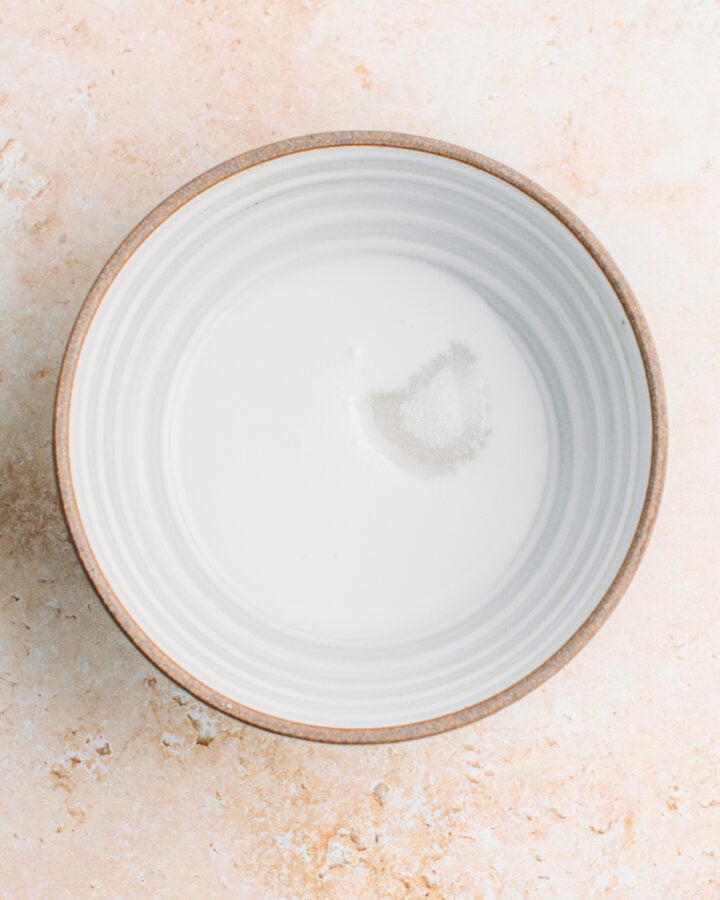

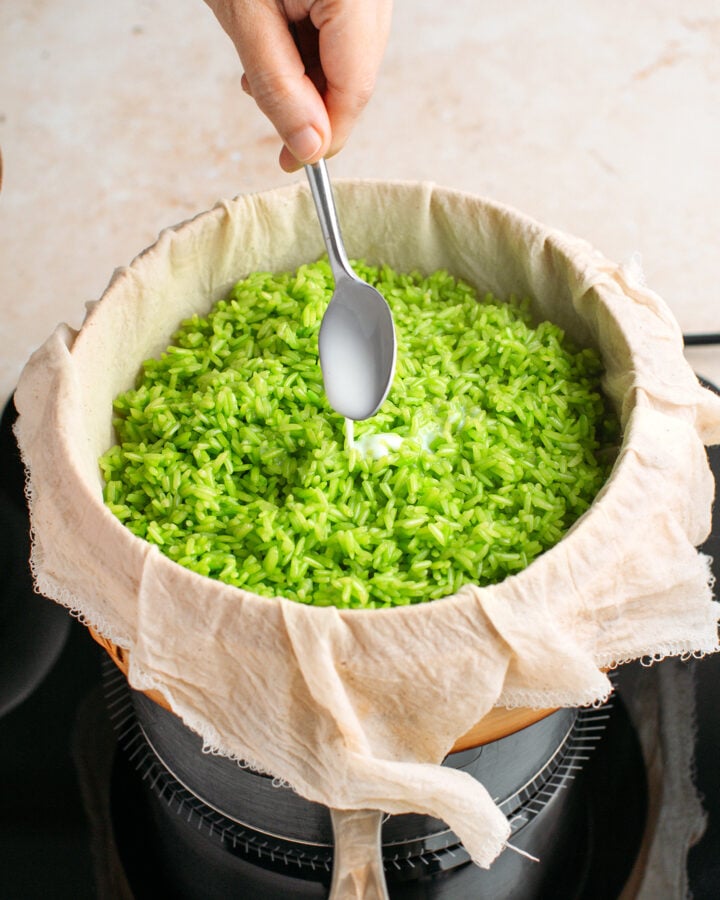
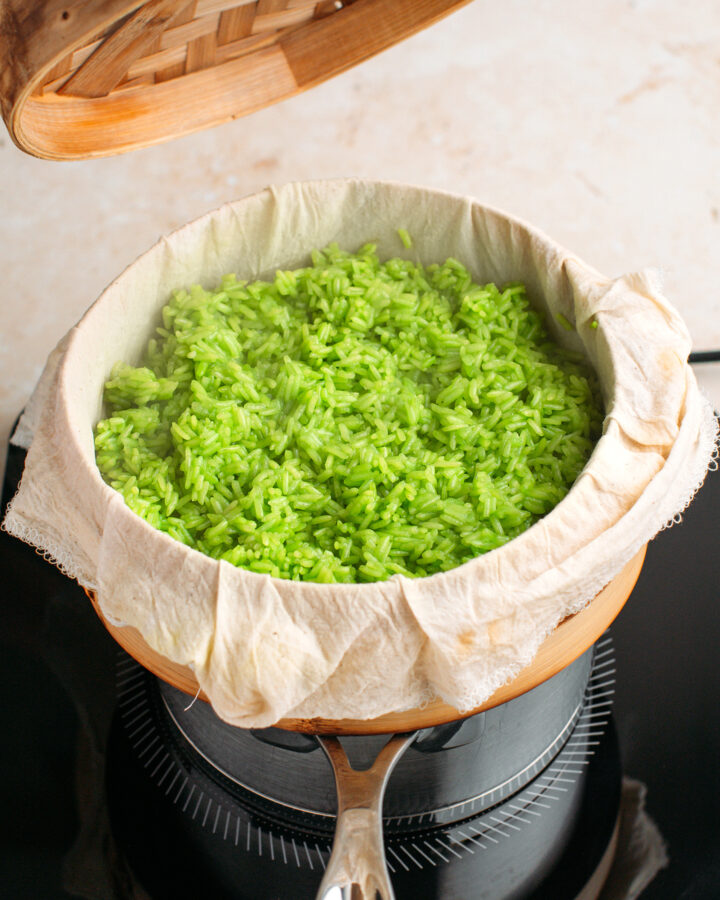
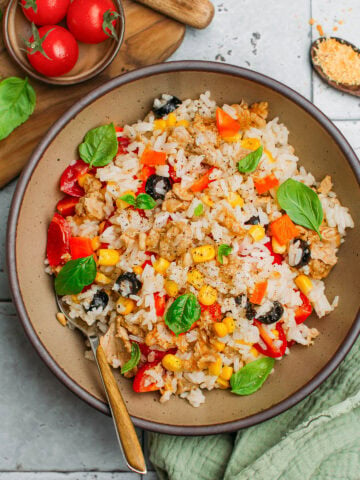

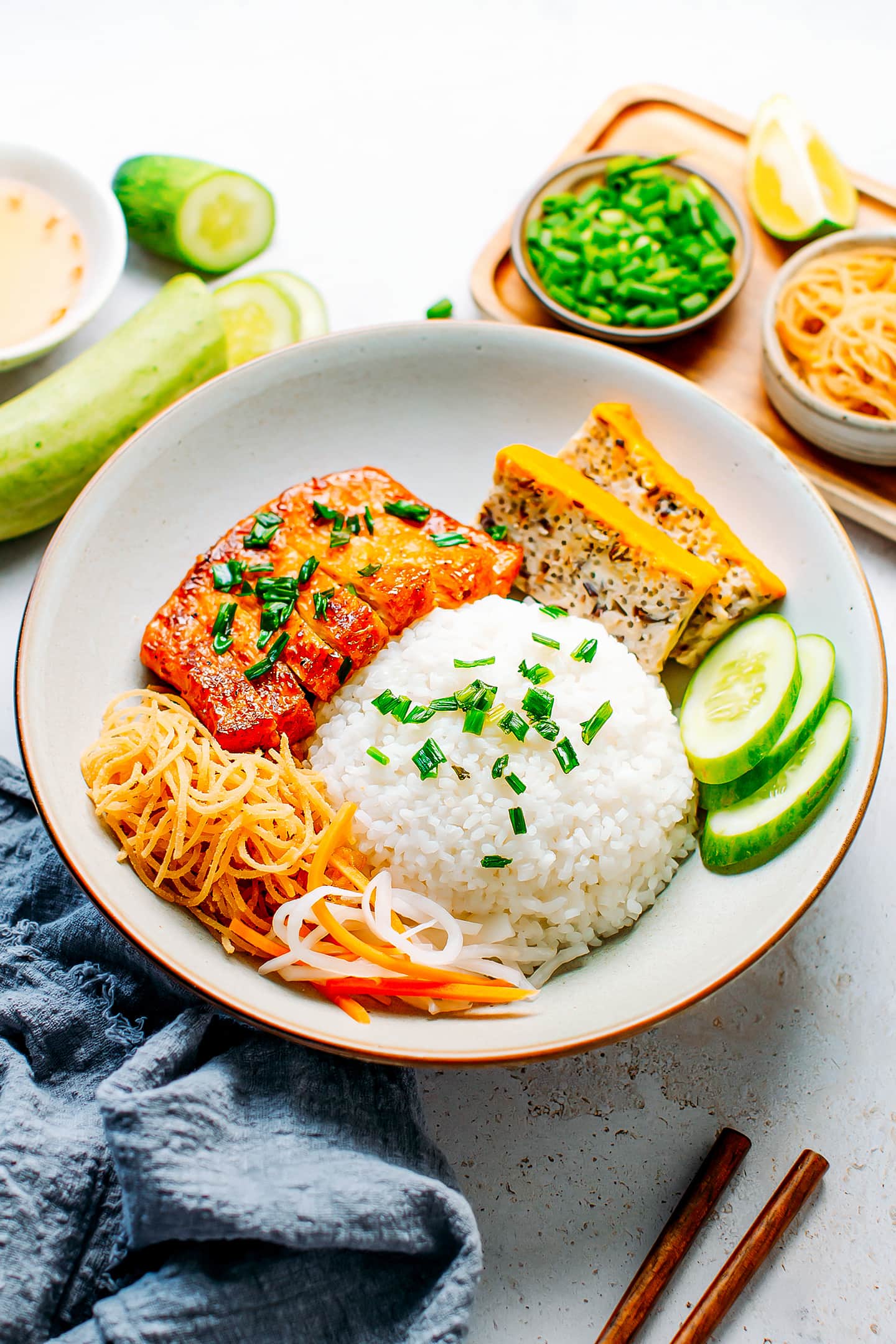

Leave a Comment